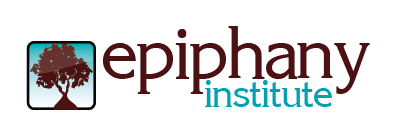What Does An Expert Look Like?
- by Isha Cogborn
If you close your eyes and think of what an expert in your industry looks like, what visual comes to mind? If the image of a middle-aged white man appeared, you’re not alone.
A 2019 study of more than 200 kindergartners and first graders in New York and found that they were already categorizing white men as more “brilliant” than white women, black men, and black women – regardless of their own race.
No matter how much education you attain or how lengthy your track record of success is, it can be difficult to undo the programming we’ve unconsciously received throughout our lives.
This is even further reinforced when the most highly acclaimed books and podcasts featuring experts, and even professional conference speakers seem to reinforce this perception.
Why Does it Matter?
Thought leadership and best practices are usually created through the lens of our own experiences. When Sheryl Sandberg wrote the book Lean In, she caught a lot of flak because her experiences as a working mother included having outside help that made her domestic burdens lighter.
There’s nothing wrong with her speaking from her own experiences. Issues arise when we expect everyone to follow the given blueprint when they don’t have the same tools. That’s why we need more diverse perspectives.
We must also have diverse experts speaking on topics that aren’t pigeon-holed to diversity, equity and inclusion, LGBTQ+ or women’s issues. It still baffles me how often I have to correct people who assume that my client base is only women. I don’t use pastel colors or swirly fonts in my branding, but that unconscious programming causes some to think if I’m a woman, I can only help other women.
What Can We Do About It?
- Are you involved in the decision-making process about who your company chooses to speak at conferences or professional development trainings? If you’re not doing so already, expand your search beyond the status quo. Diverse experts are out here. Don’t stay silent because you’re afraid to “rock the boat”. Your peers may not even be conscious of it.
- If you aren’t satisfied with the level of diversity represented in the experts featured in professional development at your company or organizations that you’re a part of, send them recommendations about people who you think would be a good fit. To take it a step further, encourage diversification of the people involved in the process. When I was in college, we were often frustrated that the entertainers brought to campus weren’t reflective of who we wished to see. Ultimately, a group of diverse students joined Program Board so we would have a seat at the table when the decisions were being made.
- If you possess a particular subject-matter expertise, especially in an industry where most of the voices don’t match yours, put yourself out there. That could be submitting an abstract to speak at a conference, participating in panel discussions at your company, writing an article for a professional publication or being a guest on a podcast.If you find yourself getting bored at work because you aren’t met with new challenges or don’t feel like your expertise is valued, taking your voice outside of the walls can inject a new sense of purpose and excitement to your career.
Want to explore what that might look like or how to get started? Schedule a complimentary consultation with me.
If you’re a woman or person of color operating in spaces where you don’t often see people who look like you, you know the power of representation. It can make the difference in the possibilities you see for yourself and also allow others to see you as capable of more than they may have been unconsciously programmed to believe.
Let’s do our part to ensure that no matter what someone looks like or where they come from, expertise is valued and recognized.
— Isha Cogborn

